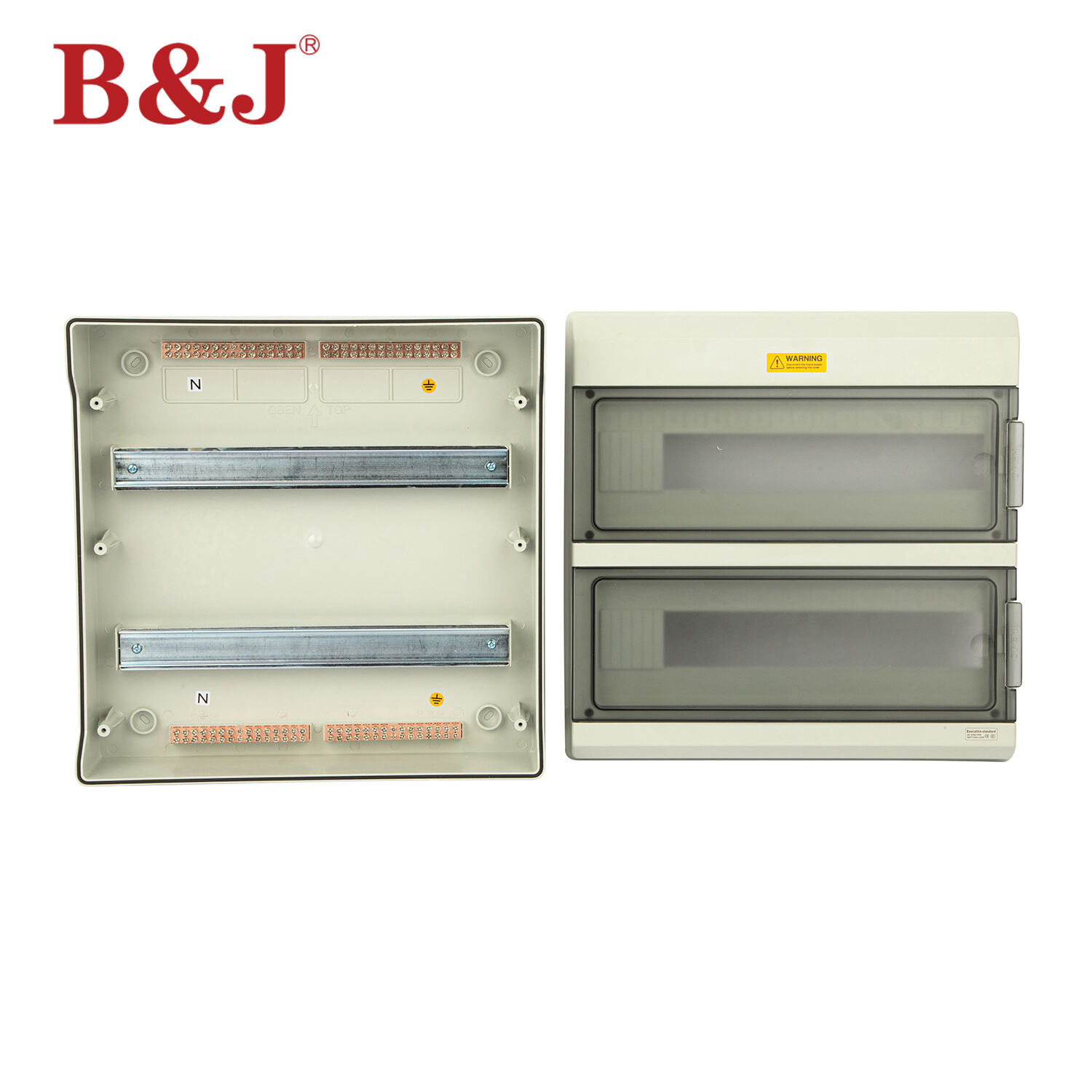Understanding Power Distribution Systems in Modern Infrastructure
A distribution box serves as a crucial component in electrical systems, acting as a central hub for managing and distributing electrical power throughout buildings, industrial facilities, and infrastructure projects. These essential units ensure safe and efficient power distribution while protecting circuits from overload and short circuits. In today's rapidly evolving electrical landscape, distribution boxes have become increasingly sophisticated, offering enhanced features for both residential and commercial applications.
Modern distribution boxes combine robust safety mechanisms with intelligent monitoring capabilities, making them indispensable in our power-dependent world. As electrical demands continue to grow, understanding these systems becomes vital for property owners, facility managers, and electrical professionals alike.
Essential Components and Functions of Distribution Boxes
Primary Components and Their Roles
The distribution box contains several vital components working together to ensure reliable power distribution. The main circuit breaker serves as the primary safety switch, while bus bars efficiently distribute incoming power to multiple circuits. Terminal blocks provide secure connection points for incoming and outgoing cables, while DIN rails offer standardized mounting options for various electrical devices.
Modern distribution boxes also incorporate surge protection devices, residual current devices (RCDs), and miniature circuit breakers (MCBs) to provide comprehensive circuit protection. These components work in harmony to maintain system integrity and ensure user safety.
Core Operational Mechanisms
The operational principle of a distribution box revolves around receiving incoming power and distributing it safely to multiple circuits. The main incoming supply passes through the primary circuit breaker, which provides overload protection for the entire system. The power then flows through bus bars to individual circuit breakers, each protecting specific circuits or zones.
Advanced distribution boxes may include power monitoring systems, allowing users to track energy consumption and identify potential issues before they become problematic. This predictive capability helps maintain system efficiency and prevents unexpected downtimes.
Types of Distribution Boxes for Different Applications
Residential Distribution Solutions
Residential distribution boxes are designed for home environments, typically handling loads between 100 to 400 amperes. These units feature compact designs, user-friendly interfaces, and sufficient circuit capacity for standard household applications. Modern residential distribution boxes often include dedicated circuits for high-demand appliances and integrated surge protection.
Smart home integration capabilities are increasingly common in residential distribution boxes, allowing homeowners to monitor and control their electrical consumption through mobile applications. This technology enables better energy management and cost control.
Commercial and Industrial Variants
Commercial and industrial distribution boxes are engineered for higher power demands and more complex electrical systems. These units handle larger current capacities, often exceeding 1000 amperes, and incorporate sophisticated monitoring and control features. Their robust construction ensures reliability in demanding environments.
These distribution boxes typically include advanced features such as power factor correction, harmonic filtering, and remote monitoring capabilities. They may also incorporate redundant systems and automatic transfer switches for critical applications requiring uninterrupted power supply.
Selection Criteria and Installation Considerations
Key Factors in Distribution Box Selection
Choosing the right distribution box requires careful consideration of several factors. Load requirements, physical space constraints, and environmental conditions play crucial roles in the selection process. The number of circuits needed, both current and future, must be accurately assessed to ensure adequate capacity.
Safety certifications, IP ratings for environmental protection, and compatibility with existing electrical systems are essential considerations. The selected distribution box should also accommodate future expansion and technological upgrades.
Professional Installation Requirements
Proper installation of a distribution box demands professional expertise and adherence to electrical codes. The installation process includes proper mounting, correct cable sizing, and precise terminal connections. Grounding systems must be properly implemented to ensure safety and compliance with regulations.
Regular maintenance schedules should be established during installation planning. This includes periodic inspections, thermal imaging surveys, and component testing to maintain system reliability.
Maintenance and Upgrading Practices
Preventive Maintenance Protocols
Regular maintenance of distribution boxes is crucial for ensuring long-term reliability and safety. This includes visual inspections for signs of wear or damage, thermal scanning to detect potential hotspots, and testing of protection devices. Cleaning and tightening of connections help prevent performance degradation.
Documentation of maintenance activities and test results provides valuable historical data for system optimization and troubleshooting. Modern distribution boxes often include built-in diagnostic features that facilitate maintenance procedures.
Upgrade Strategies and Modernization
As electrical requirements evolve, distribution boxes may need upgrades to accommodate new demands. This might involve adding circuits, replacing outdated components, or integrating smart monitoring systems. Careful planning ensures upgrades can be implemented without disrupting existing operations.
The integration of renewable energy sources and energy storage systems often requires modifications to distribution boxes. Future-proofing considerations should guide upgrade decisions to accommodate emerging technologies and changing energy landscapes.
Frequently Asked Questions
How often should a distribution box be inspected?
Professional inspection of a distribution box should be conducted annually for residential installations and semi-annually for commercial or industrial applications. However, visual checks for signs of damage or unusual operation should be performed monthly.
What are the signs that a distribution box needs upgrading?
Key indicators include frequent circuit breaker trips, warm or hot spots on the box surface, buzzing sounds, visible rust or corrosion, or insufficient capacity for new electrical demands. Regular overloading of circuits also suggests the need for an upgrade.
Can a distribution box be expanded after installation?
Yes, most distribution boxes can be expanded within their design limitations. However, this should be done by qualified professionals who can assess the existing system's capacity and ensure modifications meet safety standards and electrical codes.
What safety features should a modern distribution box include?
Modern distribution boxes should incorporate circuit breakers, residual current devices (RCDs), surge protection, proper grounding systems, and clearly labeled circuits. Advanced models may also include arc fault detection and smart monitoring capabilities for enhanced safety.

